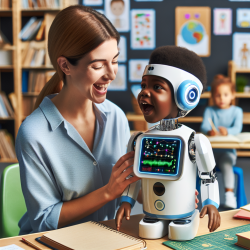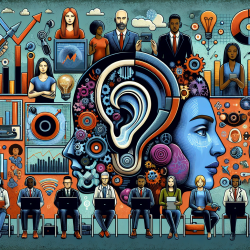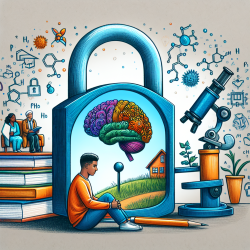In the rapidly evolving field of speech-language pathology, integrating assistive robotics can offer innovative solutions to enhance therapeutic outcomes for children. The research paper "Helping People Through Space and Time: Assistance as a Perspective on Human-Robot Interaction" by Newman et al. provides valuable insights into the design and application of assistive robots. This blog explores how practitioners can leverage these findings to improve their skills and encourage further research in this area.
Understanding Assistance in Human-Robot Interaction
The paper by Newman et al. defines assistance as a perspective where a robot, autonomous in its actions but subordinate to a user’s goals, interacts with humans. This framework is particularly relevant in speech-language pathology, where robots can support therapeutic activities while the therapist maintains control over the session's goals.
Key Design Axes for Assistive Robotics
Newman et al. identify three key design axes that are crucial for developing effective assistive robots:
- People: This axis focuses on the roles of individuals involved in the interaction, including the primary user (e.g., the child) and secondary interactants (e.g., parents or therapists).
- Space: This refers to the action space where the robot operates, whether it’s manipulating the environment, the user's body, or providing cognitive support.
- Time: This axis considers the timing of the robot’s actions, whether they are reactive, proactive, or simultaneous with the user's actions.
Applying the Research to Speech-Language Pathology
Speech-language pathologists can apply these design principles to enhance therapeutic interventions. Here are some practical applications:
Role of People
Understanding the roles of different individuals in therapy can help in designing robots that effectively support both the child and the therapist. For instance, a robot can engage a child in language exercises while the therapist monitors and adjusts the session based on real-time feedback.
Action Space
Robots can assist in various action spaces:
- Environment: Robots can manipulate objects to create interactive and engaging therapy sessions, such as using toys to encourage verbal interactions.
- Body: Robots can guide children in physical exercises that support speech development, such as oral motor activities.
- Cognitive: Robots can provide visual and auditory cues to support language learning, enhancing the child's understanding and retention of new words and concepts.
Timing of Actions
The timing of a robot’s actions can significantly impact the effectiveness of therapy:
- Reactive: Robots can respond to specific commands from the therapist, ensuring that interventions are tailored to the child's immediate needs.
- Proactive: Robots can anticipate the child's needs based on their behavior, providing timely prompts and support without waiting for explicit instructions.
- Simultaneous: Robots can work alongside the therapist, offering real-time assistance and feedback, which can help maintain the child's engagement and motivation.
Encouraging Further Research
While the current research provides a solid foundation, further studies are essential to refine these concepts and explore new applications. Speech-language pathologists are encouraged to collaborate with robotics researchers to develop innovative solutions tailored to the unique needs of their clients.
To read the original research paper, please follow this link: Helping People Through Space and Time: Assistance as a Perspective on Human-Robot Interaction.










